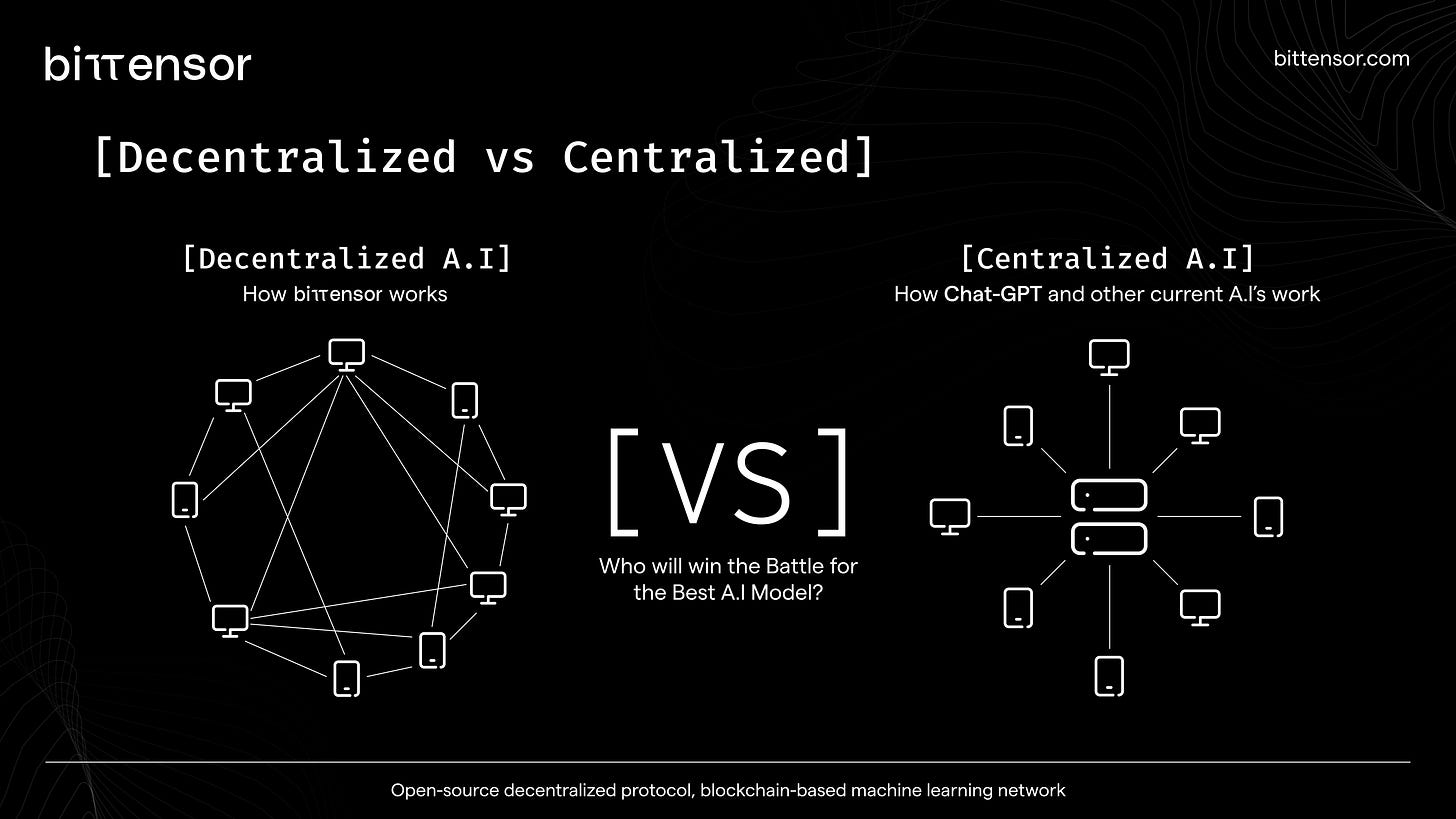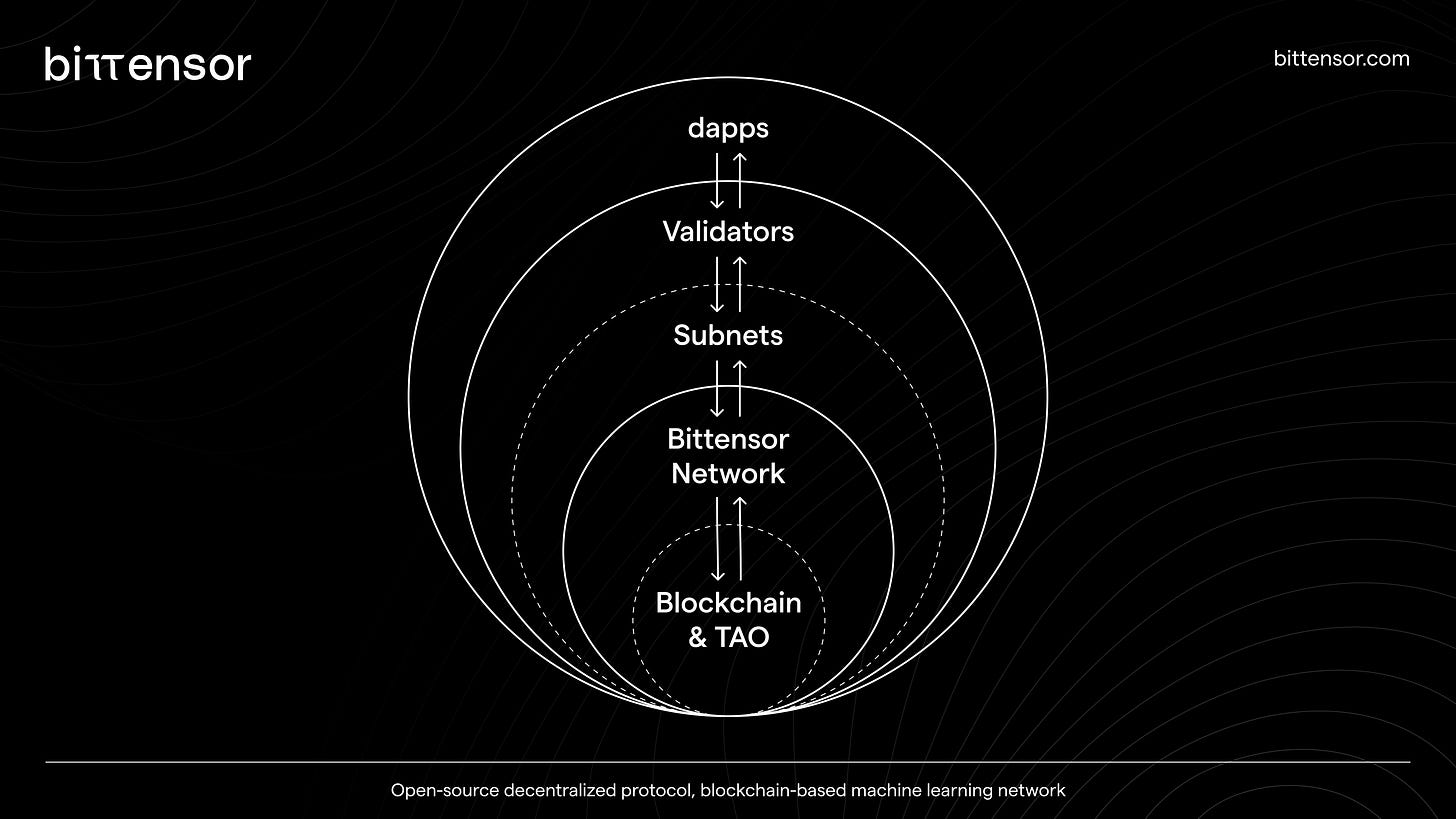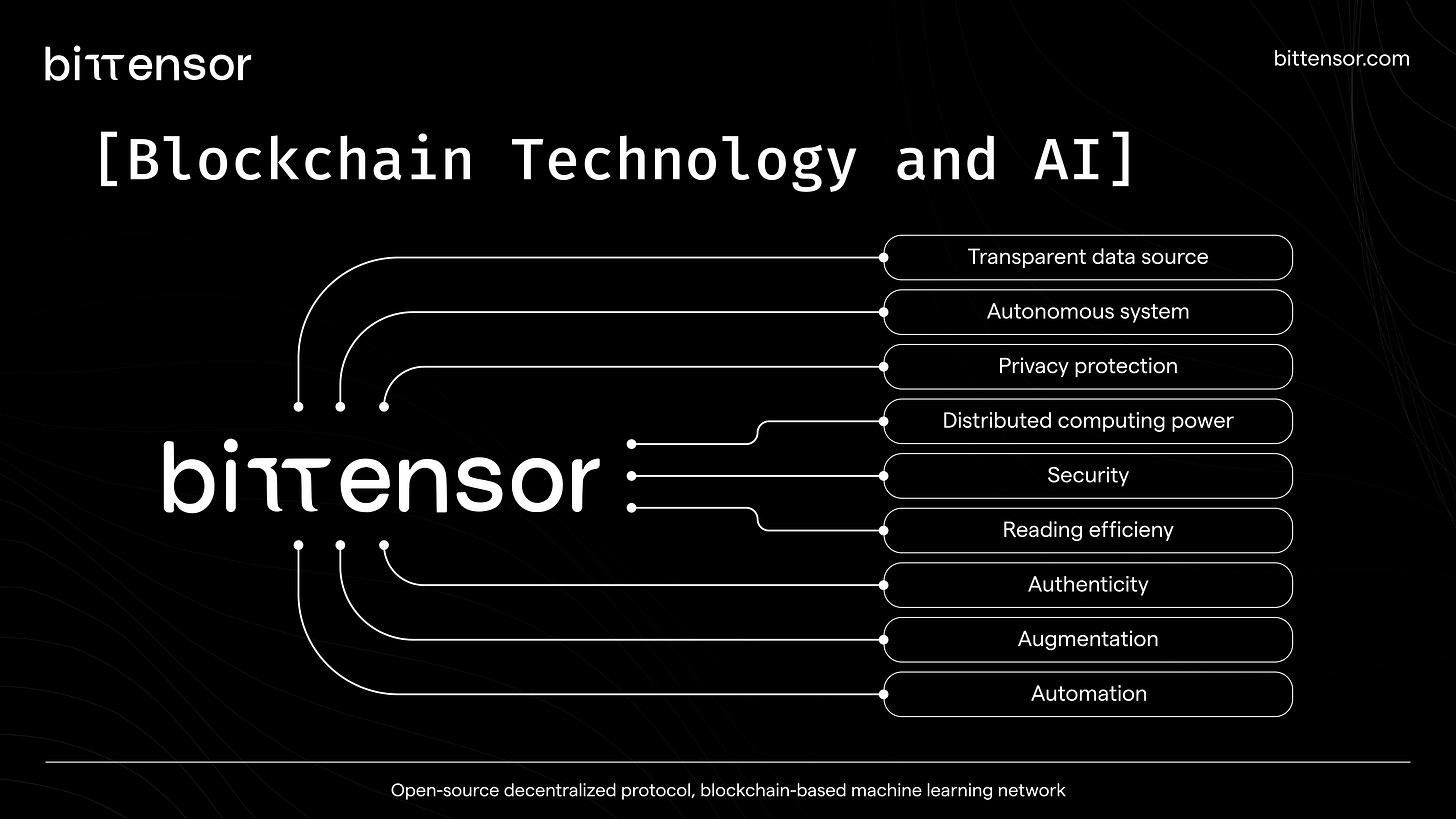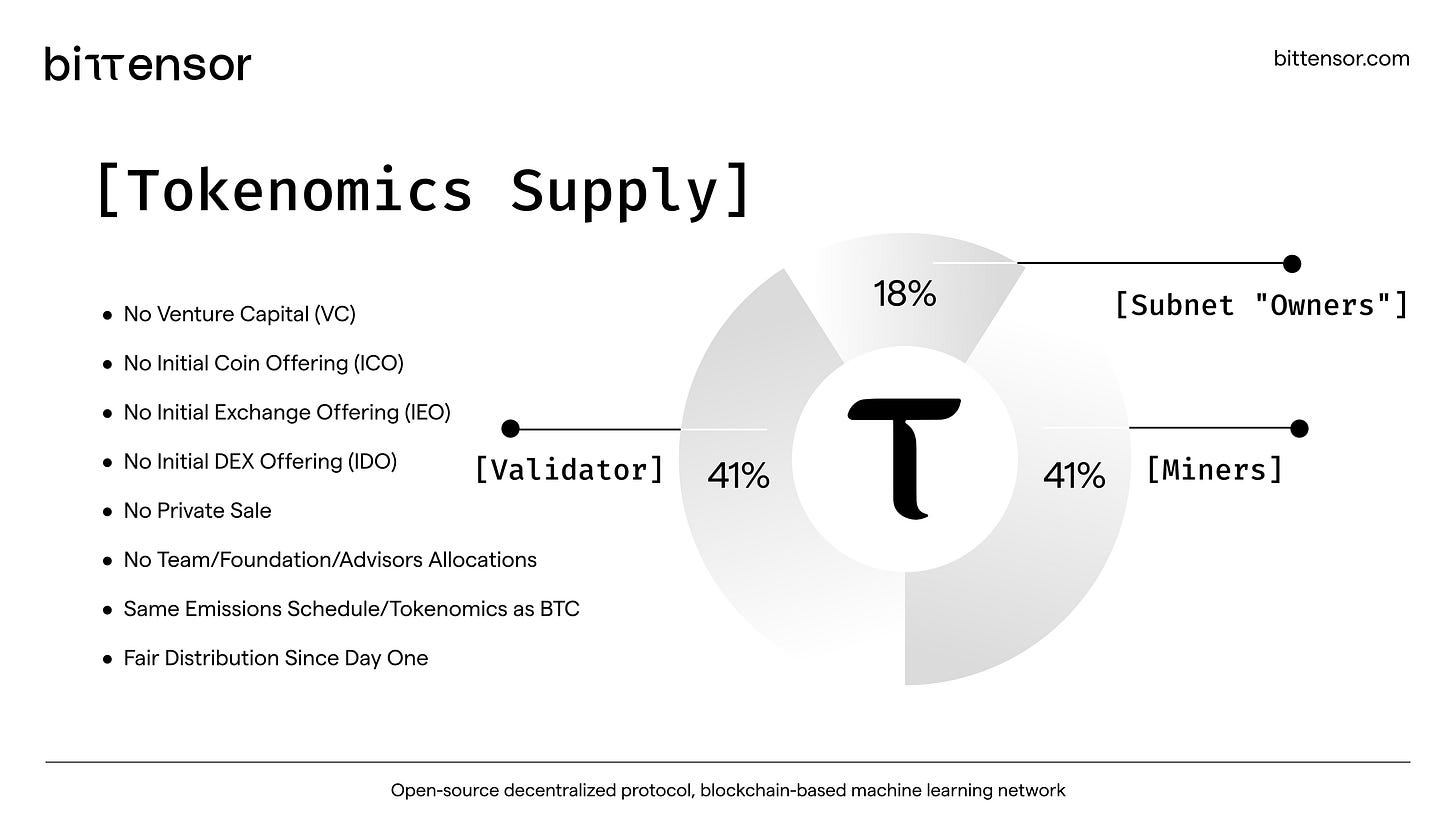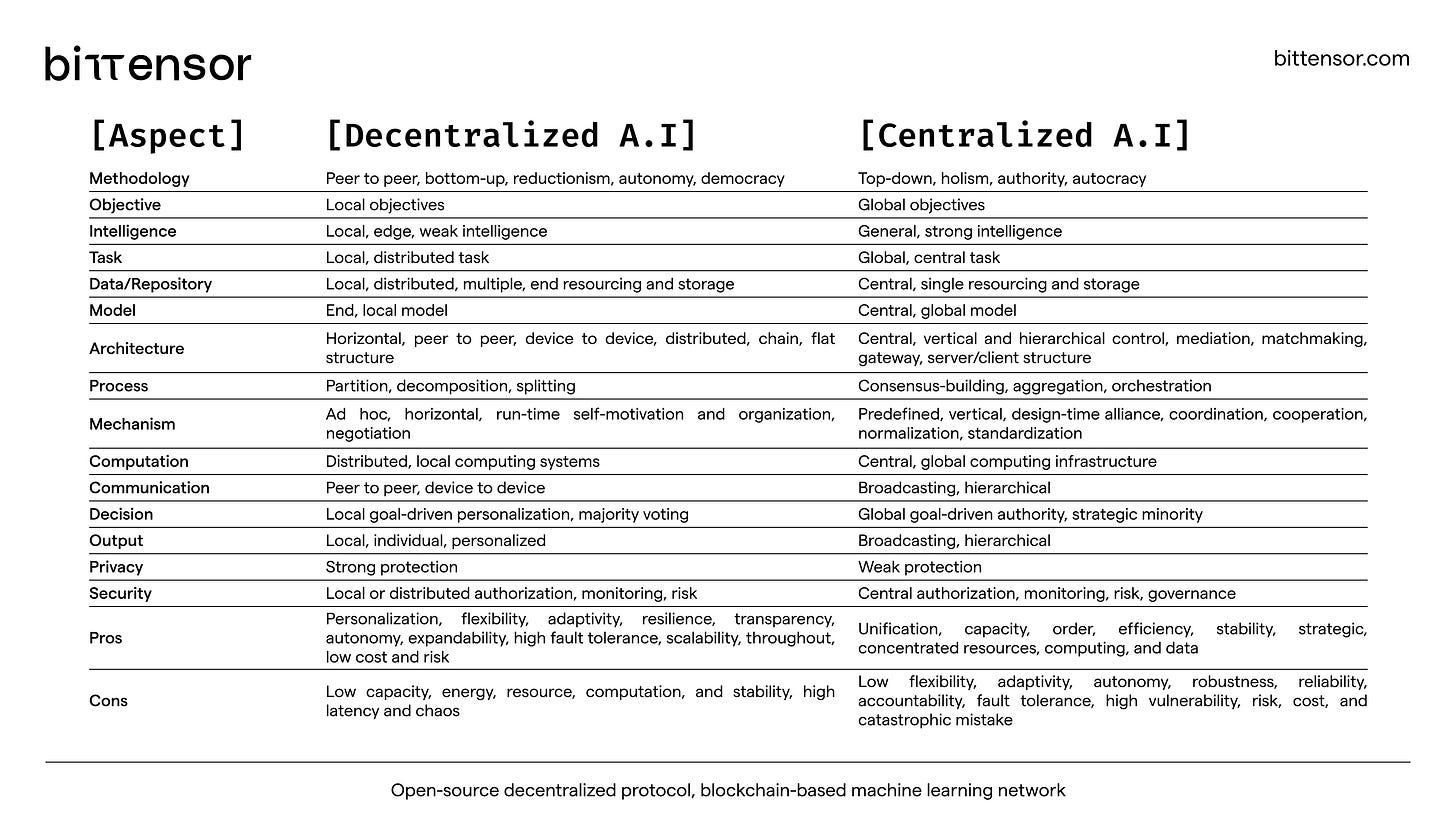As decentralized technologies permeate the fabric of today’s digital world, a new contender in the decentralized landscape — Bittensor — stands poised to revolutionize artificial intelligence (AI) and machine learning (ML). With a vision of a decentralized, incentivized, and scalable neural network, Bittensor promises to disrupt the AI paradigm, currently dominated by centralized organizations. At the heart of this network lies its native utility and governance token, TAO, which powers the Bittensor ecosystem.
In this article, we will explore Bittensor from both technical and economic perspectives, examining how its consensus mechanisms, neural networks, and tokenomics come together to create a decentralized AI protocol.
What is Bittensor?
Bittensor is a decentralized and open-source network designed to enable machine learning models to collaborate, train, and share information in a secure, permissionless environment. The fundamental idea behind Bittensor is to incentivize machine learning developers and researchers to contribute models to the network, where they are evaluated and rewarded based on their contributions.
At its core, Bittensor harnesses blockchain technology to decentralize the AI training process, enabling nodes to exchange and validate machine learning knowledge across the network. Bittensor allows any developer or organization to participate without needing centralized infrastructure or third-party intermediaries, fostering collaboration across a wide spectrum of machine learning tasks.
Bittensor’s Consensus Model
Bittensor employs a unique consensus mechanism called Proof-of-Intelligence (PoI). Unlike traditional blockchains that rely on Proof-of-Work (PoW) or Proof-of-Stake (PoS) to secure the network, Bittensor’s PoI is based on the quality of machine learning models contributed by nodes (validators) to the network.
In PoI, nodes are incentivized to share valuable information in the form of machine learning predictions and models. Validators in the network determine which nodes have contributed valuable knowledge by evaluating the utility of the models they provide. Nodes that consistently offer high-utility models are rewarded in the native TAO token, while those that provide low-utility contributions receive fewer rewards or are penalized. This competitive reward structure ensures that the network continuously improves by incentivizing participants to contribute useful knowledge.
Subnet Consensus
Bittensor also introduces a novel subnet consensus system, where models are organized into subnets according to their domain expertise. Each subnet focuses on a particular machine learning task or dataset, and nodes within a subnet can freely exchange knowledge. Validators in each subnet evaluate the quality of contributions, ensuring that models evolve and specialize over time. This hierarchical structure allows the network to scale efficiently and focus on specialized knowledge in various machine learning domains, from natural language processing (NLP) to computer vision.
The TAO Token: Utility and Governance
At the heart of Bittensor’s ecosystem is the TAO token. It plays a crucial role in incentivizing contributors, securing the network, and governing the protocol.
Utility of TAO
Incentivizing ML Contributions: As nodes contribute their machine learning models and predictions to the network, they are rewarded in TAO tokens, which represent the value of their contribution. This incentivizes developers to contribute high-quality models and predictions, ensuring continuous improvement of the network’s machine learning capabilities.
Staking and Delegation: TAO can be staked by network participants to increase their influence over the consensus process. Staking TAO on validators signals trust in their ability to curate high-quality machine learning models. Moreover, smaller nodes can delegate their TAO to validators, creating an ecosystem where participants align themselves with reliable models and benefit from their success.
Transaction Fees and Bandwidth: The TAO token also serves as the medium for transaction fees within the network. Users who request machine learning services from the network pay transaction fees in TAO. Additionally, nodes pay fees to allocate bandwidth and access the network’s resources, ensuring that contributors are fairly compensated for their computational power and intellectual efforts.
Governance and Decentralization
Bittensor is designed to be fully decentralized, and governance decisions are made through a token-weighted voting system. TAO holders have the ability to propose and vote on protocol upgrades, parameter adjustments, and other governance matters. This decentralized governance mechanism ensures that no central authority can unilaterally control the network, and changes are made in a way that reflects the collective will of the community.
Economics and Tokenomics of TAO
The tokenomics of TAO play a critical role in maintaining the long-term sustainability and scalability of Bittensor. The total supply of TAO is capped at 21 million tokens, similar to Bitcoin’s hard cap, providing deflationary dynamics as the network grows. The fixed supply ensures that TAO becomes increasingly scarce as demand for machine learning services on the network increases, potentially driving the value of the token upward over time.
Inflation and Burn Mechanisms
To maintain a balance between incentivizing contributors and limiting token inflation, Bittensor employs an inflationary minting mechanism, where a portion of newly minted TAO tokens are distributed to contributors as rewards. However, to offset inflation, the network also incorporates a burn mechanism, where transaction fees and bandwidth payments are burned, effectively reducing the circulating supply of TAO over time. This creates a deflationary pressure that helps maintain the value of the token as demand for machine learning services grows.
Decentralized AI: A Path Forward?
Bittensor’s approach to decentralized AI is unique in that it seeks to harness the collective intelligence of machine learning developers across the globe. By incentivizing collaboration and decentralizing the training and validation of models, Bittensor promises a future where AI development is no longer monopolized by a few tech giants, but instead, is driven by a global community of contributors.
However, the challenges ahead are non-trivial. Bittensor must continue to refine its Proof-of-Intelligence consensus, scale its subnet architecture, and ensure that its tokenomics remain sustainable as the network grows. Moreover, Bittensor will need to attract and retain high-quality contributors to ensure the models trained on the network remain competitive with those developed in centralized environments.
In conclusion, Bittensor and its TAO token offer a compelling vision of a decentralized future for machine learning and artificial intelligence. By aligning incentives with contributions and empowering a community-driven development process, Bittensor has the potential to democratize AI research and development. As the network continues to grow, it will be fascinating to watch how it evolves and whether it can fulfill its ambitious goal of decentralized, scalable, and incentivized machine learning.



